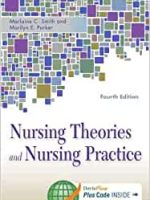Accounting for Decision Making and Control plays a crucial role in helping businesses make informed decisions and effectively manage their operations. The Solution Manual for the 9th Edition provides detailed solutions to problems and cases encountered in the field of accounting. Let’s dive into some of the key points discussed in this manual.
In Chapter 1, the importance of using accounting information for decision making and control is emphasized. One of the key observations highlighted is the trade-offs involved in utilizing accounting information. From analyzing opportunity costs that are challenging to capture with traditional accounting methods, to focusing more on control and less on opportunity costs, the challenges and benefits of using accounting information are revealed.
An interesting problem addressed in the manual is the idea that one cost system isn’t always sufficient. This notion of “Economic Darwinism” emphasizes the tension and conflicts that can arise when a single accounting system is used for multiple purposes. While this approach may have drawbacks, such as not adequately performing important managerial functions, it also offers benefits like lower bookkeeping costs and streamlined auditing processes.
The manual also touches upon how managers often resort to developing their own ad hoc information systems for decision making, utilizing tools like spreadsheets and informal observations. This highlights the need for flexibility and creativity in utilizing accounting information effectively.
In addition to the Solution Manual for Accounting for Decision Making and Control, other related materials like Test Banks can also be valuable resources for students and professionals looking to deepen their understanding of accounting concepts. These materials provide practice questions and solutions that can help reinforce learning and test knowledge in a practical manner.
Overall, the Solution Manual for Accounting for Decision Making and Control for the 9th Edition offers valuable insights into the complexities of using accounting information in decision making and control processes. By understanding the trade-offs, challenges, and benefits associated with accounting systems, businesses can make more informed decisions and improve their overall operational efficiency.
**FAQs**
**1. What is a Solution Manual?**
A Solution Manual is a guide that provides answers and explanations to problems and cases presented in textbooks. It helps students understand the solutions in a detailed manner, enhancing their learning and comprehension of the subject matter.
**2. Why is Accounting for Decision Making and Control important?**
Accounting for Decision Making and Control is essential for businesses as it helps in making informed decisions, managing resources effectively, and maintaining financial control. It enables organizations to track performance, allocate resources efficiently, and plan for the future.
**3. How can Test Banks help in learning accounting concepts?**
Test Banks contain practice questions and solutions that allow students to test their understanding of accounting concepts. By using Test Banks, students can assess their knowledge, practice problem-solving skills, and prepare effectively for exams.
**Conclusion**
In conclusion, the Solution Manual for Accounting for Decision Making and Control for the 9th Edition provides valuable insights into utilizing accounting information effectively in decision making and control processes. By understanding the complexities and trade-offs involved, businesses can enhance their decision-making capabilities and improve operational efficiency. With the aid of materials like Test Banks, students and professionals can further deepen their understanding of accounting concepts and practice applying their knowledge in real-world scenarios.










Be the first to review “Accounting for Decision Making and Control for the 9th Edition-Solution Manual”